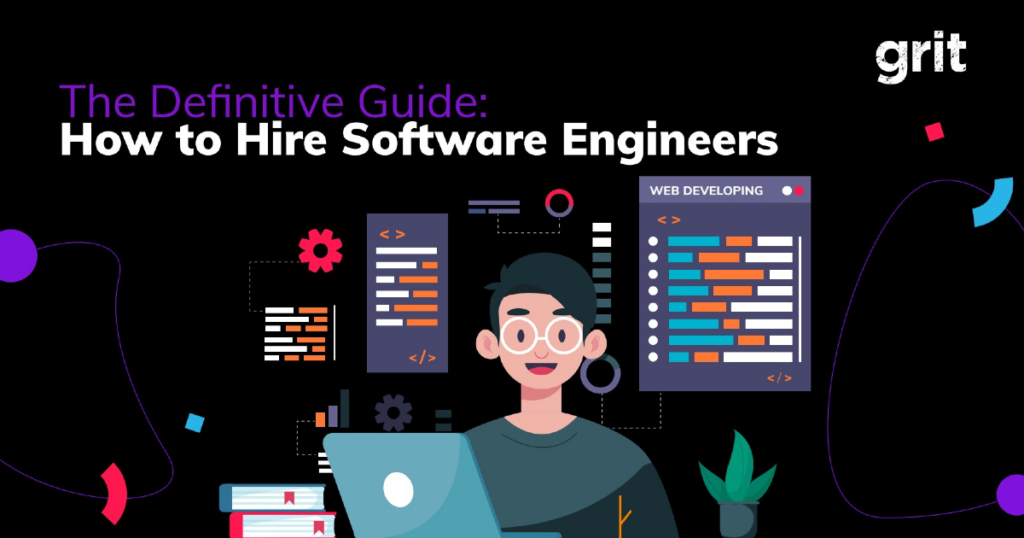
The demand for skilled software engineers in every industry and sector is currently experiencing a rapid rise, as they’re required to power the world’s softwares and most promising innovations. Many companies are turning to the global market in order to fill urgent roles, which is now made easier thanks to the easy access to remote hiring that play a crucial part in successfully sourcing and onboarding some of the best individuals possible. Now, are you thinking of doing the same, but are unsure how to start?
With our comprehensive guide, we’re not only going to walk you through the basics of who a software engineer is, we’re also going to be equipping you with valuable knowledge on their core job responsibilities, key terminology/jargons, crowd-favourite programming languages, as well as experience and education, among others. We’ll even provide you with sample job descriptions, approximate salary ranges, and popular platforms to source some of the top talent (you can thank us later). You’ll be able to better understand and familiarise yourself with all things software engineer-related, to the point where you can expertly and effortlessly screen through candidates to select the right fit!
Pro tip: Another method you can consider would be to develop and improve your company’s DEI (diversity, equity, and inclusion) programme. By focusing on a more diverse talent pool, your company would find that it’s better equipped to manage the severe software engineer shortage.
“A well-functioning team of adequate people will complete a project almost regardless of the process or technology they are asked to use (although the process and technology may help or hinder them along the way.)”
Alistair Cockburn
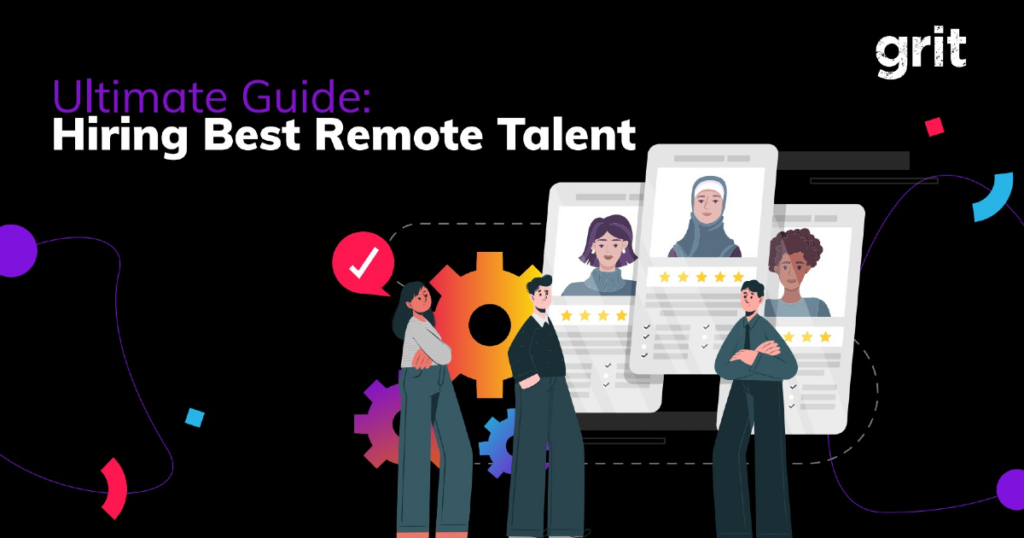
Have you been thinking about adding more skilled employees to your company, but lack the necessary resources in order to source and onboard the people you need? Enter the recent trend of hiring remote talent! There are distinct advantages to incorporating this type of arrangement (for both you and the employees), as remote work is in high demand among job seekers after the pandemic, particularly with top-tier talent. But, if you aren’t quite familiar with what this entails and how you can go about the remote recruitment process, this comprehensive guide is just what you need!
You’d first need to understand why is it that so many workers prefer to work remotely; top reasons include flexibility, reduced expenses, and a better chance of a work-life balance. In fact, it has not only become the new normal, it has been embraced so wholeheartedly that many workers are willing to resign from their jobs if they weren’t allowed to keep their work-from-home (WFH) privileges. So, by offering WFH as part of your company’s perks, you’re already one step ahead of the competition.
Knowing the right sites and/or technology-assisted methods that you can use to source for these remote talent (apart from LinkedIn), would allow you to become more efficient and reduce the costs typically involved with traditional recruitment methods. In addition, we’ll be sharing with you some of the necessary tools that would enable a smoother, hassle-free, and efficient workflow for all your remote talent. Finally, if you’re still on the fence about hiring remote workers for your team, our guide will present you with the major benefits of doing so. What are you waiting for, let’s get you started on the right path towards hiring only the best!
“People are more productive working at home than people would have expected. Some people thought that everything was just going to fall apart, and it hasn’t. And a lot of people are actually saying that they’re more productive now.”
Mark Zuckerberg

Did you know that the job interview was not invented until 1921? It all began when Thomas Edison devised a written test to assess job candidates’ knowledge! Interviews have changed dramatically in the century since, particularly as technology and the industrial revolution advanced, but they remain an important part of any company’s hiring process.
After advertising job openings, collecting job applications and resumes, and screening applicants, job interviews are the next most important step in a hiring process that no employer should overlook. While the purpose of job interviews is mostly the same, which is for employers to gather information and assess potential candidates’ abilities and skills before making a hiring decision, how they are conducted should be efficient and pertinent.
Nevertheless, there are some interviewers who, despite filling the variety of job positions available, are accustomed to asking the same questions and lack any originality in the interview. This could reduce the likelihood of hiring the best candidate, which may have a negative impact on attrition rates and be costly for businesses. That is why interviewers play an important role in any interview, and it entails more than simply asking questions of the candidates being interviewed, but also knowing tips on how to interview someone.
An interviewer’s responsibilities begin before, during, and even after the interview session. Being a good interviewer, according to Maestro, is an important part of collecting feedback from users, learners, and partners. When done correctly, asking questions and listening can help you build empathy with your audience, while also gathering valuable intelligence that can help your organisation move forward.
Furthermore, being a good and effective interviewer is significant because the interviewer’s behaviour and actions reflect the company’s image. Since the interview is usually the first time an interviewee meets someone on behalf of the company face-to-face, the interviewer’s demeanour will leave an impression on candidates. They could make assumptions about the company’s work culture, environment, and morality.
Sometimes, just from the interview, candidates can decide whether to accept the position offered or to remain loyal once they begin working. Being a good interviewer can even have a positive impact on an employee’s attitudes and job performance, as MarketSplash pointed out that potential candidates’ experiences and attitudes form during the earliest stage of interaction with potential candidates. Not only that but the interview time should be spent wisely to find and choose the best candidate.

It’s well understood that during an interview, the interviewer will have the opportunity to obtain critical information from the candidates, while the candidates will have the opportunity to express their experiences and what qualifies them for the job position applied for. However, how well the interview goes and how successful the information obtained is all dependent on the situation of the interview and interviewer.
What matters most for any company, in addition to having a good and effective interviewer, is to know how to interview well. So, what factors would lead to an interview becoming good and effective? Let’s take a look at some of the key qualities that should be highlighted during a job interview:
Interviews can be nerve-racking for both the interviewer and the interviewee. However, as an interviewer, you have command of the situation and should take the initiative to lead the way. So, you’re ultimately responsible for whether or not the interview goes well. When the interviewer is effective, even the most anxious candidate may occasionally become composed and more ready to engage in conversation and answer questions.
Given the important role that interviewers or hiring managers play during interview sessions, it’s crucial to know how to be a good interviewer. Here are some interviewing tips and techniques to help you improve your interviewing skills, learn how to interview candidates, and make your interview sessions more gainful and productive:
Make sure to conduct the necessary background checks on interviewees before any interviews. Examine the application, resume, and cover letter, if one is included, of the candidate. Utilise the information to not only plan your questions but also to consider how you can establish a connection with the applicant and make them feel at ease. Although you must do your best to prepare, be careful not to over-prepare because there are times when you simply must be flexible and adapt as you interview the candidate.
There should be a framework – sort of like a script that serves as a compass – for an interview to go well. When you’re in the flow, it will be simpler for you to know where to begin, when to ask questions, and how to be more organised to record responses. Most importantly, before anything else, make a brief introduction to the candidate and/or engage in light conversation.

As an interviewer, you must prepare questions that will allow you to learn more about the candidate’s background and professional experience. Make sure to ask clarifying questions to gauge details that will help you decide whether or not to hire. Avoid asking candidates leading, hypothetical, or silly questions that could confuse them or make them react negatively.
When conducting an interview, these two actions are unacceptable. Before you enter the interview room, make sure you take steps to control any aggressive or irrational behaviour you might have when circumstances are different from what you had anticipated. Remember that what you say and how you act says a lot about you and the company, so try to stay cool, calm, and collected at all times. This is one of the most important aspects of what makes a good interviewer.
It’s more likely that you will make an uninformed decision if you feel this bias and prejudice toward the interviewee. Maintain a neutral attitude throughout the hiring process, from the time you review the application and resume to the time you hire. Bias and prejudice can also be avoided by interviewing candidates in groups or by conducting a phone screening first.
You will likely conduct interviews with multiple candidates for various positions, making it challenging to keep track of and recall everything that each candidate says. Therefore, make sure to always take thorough, well-organised notes during the interview so you can later review and compare the specifics. When you take notes, you can also get creative and pose inquiries about the information the candidates just provided.
Tips for interviewing someone include having an empathetic attitude that will serve you well when dealing with interviewees or anyone else for that matter. Being emphatic means paying more attention, being fully present, and expressing gratitude to the candidate. By doing so, you demonstrate that you’re considerate of the candidate’s thoughts and can contribute to the formation of trust.
Candidates almost always have questions during the interview, but they frequently hesitate to ask because they are unsure of how to phrase them, afraid to offend the interviewer, or simply nervous. Let the applicant know that they are welcome to ask any questions they may have about the company, the business operation, the job position, or work there in general. By encouraging candidates to ask questions, you can learn more about their personalities and interview preparation.
As much as candidates are unaware of what questions you will ask as the interviewer, you’re also unsure of how they will respond and provide feedback to certain questions. Pay attention to the interviewee’s words so you can ask questions that are pertinent to what they are saying and they will know you’re paying attention to them. Candidates are more likely to relax and be amiable when they see that you’re listening to what they have to say.

Don’t leave the candidate hanging after the interview is over. Describe what will happen next and when they will hear from you regarding your hiring decision, as well as whether you will require the candidate to provide any additional information or documents. You could also give the interviewee a tour of the office to show them what it’s like to work for the company.
The more interviews you conduct, the more at ease you will become and the easier it will be to prepare for one. Furthermore, you will be interviewing a wide range of candidates, so you will learn how to deal with any unexpected events from them. Aside from that, you can practise interviewing friends or colleagues to see where your questions and script can be improved.
During the interviews you conduct, mistakes and inconsistencies are likely to occur. Don’t be upset by it; instead, view it as a learning experience. How do you know if you’ve made a mistake? If you make a mistake, you might realise it yourself. If not, you could get feedback from anyone else in the room interviewing with you, or you could personally ask the interviewee what you could do better. After the interview, you can follow up with a phone call or an email.
Interviewers who arrive unprepared run the risk of coming across as uninterested and may struggle to conduct the interview effectively. Finally, they might hire an unsuitable candidate because they misjudged the quality of the interviewees. So, before you walk into any interview, get the following items on this checklist ready at least a few days or hours before the session:
(Source: Resources for Employers)
What exactly does that imply? During the interview, keep asking candidates the “why” questions multiple times. his method, which, as Maestro mentioned, is popular with many three-year-olds, was developed at Toyota Motor Company and was instrumental in assisting them in developing their continuous improvement approach to manufacturing. While it may appear awkward, repeatedly asking “Why?” can lead the conversation down the path of identifying the problem’s underlying cause.
No matter how many times you conduct interviews or if it’s your first time, make sure to give it your all to become the best interviewer out there. Once you have the skills and can conduct interviews well and effectively, you’ll be able to quickly sift through the applicants to find the top candidates for the company!

Job hunting has changed dramatically over the last five decades. During the baby boomer generation, job seekers had to show their most professional side, and serious measures were taken to ensure that they made the best impression during their job interviews.
But now, with the power of social media and a much greater sense of job market awareness, the tables have turned. Job seekers can obtain a list of potential employers to work with online, expanding their options. They can also conduct extensive research on the companies to which they wish to apply.
From comparing salaries, benefits, and job responsibilities to reading employee reviews, this phenomenon has compelled recruiting firms to up their hiring game to attract quality employees. Companies are left to answer the question, “How can they compete for the best employees?” Everything boils down to the company’s reputation.
While maintaining a company’s reputation for a reassuring merger between employer and employee is important, one factor appears to be overlooked as trivial by most organisations – and that’s employer branding.
SHRM describes employer brand as what the organisation communicates as its identity to both potential and current employees. It includes the mission, values, culture, and personality of a company. According to Glassdoor, 95% of job seekers consider the reputation of the company when making a career decision. Fundamentally, any interested candidate will look first and foremost at the company’s reputation or employer image.
Employer branding responds to this desire for consideration by displaying a good reputation and positive reviews, among other things, to make the best possible impression in the job seeker market. In the same way that companies use advertising to increase sales, they must also promote their reputation to attract dynamic talent.
The first step in evaluating the effectiveness of any company’s employer branding strategy is to develop an employer value proposition (EVP). This is a vital component that acts as a guide for companies in determining the types of associations and offerings to be given in exchange for the prospective candidate’s skills and experiences. An important process to ensure that your company stays on track with the allocated budget and achieves the desired hiring results.
A well-defined EVP aids in the definition of a company’s employer brand, which strengthens the talent acquisition process over time. Creating an EVP will make it clear what values employees are expected to provide as well as what value they can expect in return.

Entrepreneur emphasises that employer branding will not only reduce the cost of hiring good employees but contributes to the development of strong company culture and brand, to the point where employees can even become brand ambassadors. That said, positive employer branding is an intentional implementation that demands careful planning.
It can ultimately motivate existing employees to continue working ergo becoming advocates. This will help to build trust with potential recruits as they receive positive feedback from current employees via word of mouth or online reviews. Furthermore, marketing efforts, strategic planning time, and budget can be reduced on purpose.
Consider the job seeker market. A strong employer brand can provide clear information about compensation, benefits, career opportunities and development, work environment, and culture. These are important factors that a job seeker will consider carefully before agreeing to the tasks. By defining a clear EVP, you will be able to promote your company, become a market draw, and attract top talent.
Companies must constantly be on the cutting edge of adaptation due to the economy’s and technology’s constant change. This is a significant issue because modern skills are essential for achieving company milestones and goals, and modern skills are in high demand. Therefore, who in an organisation is in charge of developing employer branding?
It’s entirely dependent on the resources, time, money, and capacity of the company. A company’s responsibilities are typically shared by the CEO, human resources, and marketing. However, even though most companies regard HR as administrative, 60% of CEOs agreed that a significant employer branding strategy must be devoted to which they’re accountable, according to Harvard Business Review (R).
Furthermore, because social media is so prevalent and has a significant impact on a company’s reputation, marketing plays an important role in developing employer branding.
There are many ways to approach the employer branding process. Again, it is dependent on your company’s resources, time, budget, and capabilities. Your company may be considering major changes that will take a significant amount of time. However, following these seven steps will speed up and simplify your decision-making process.

While following this basic employer brand strategy module of planning, implementation, evaluation, and development, you can also use these tips to enhance it:
(Source: Built In)
Employer branding has aided numerous businesses in remaining relevant, sustaining, and achieving success. For inspiration, here are a few examples of well-known companies that have good employer branding in place, as listed by the Academy to Innovate HR (AIHR).
A company’s success begins and ends with its employees. Employees, customers, and stakeholders all can influence the business. A positive employer brand communicates more than just the fact that the company is a good place to work. It has the potential to change the organisation’s overall perception across markets.
People can access a company’s online presence 24/7 thanks to the Internet, giving the company less control over the types of content that are published at any given time. Besides that, the job seekers market is made up of digital (native) professionals for whom social media is second nature. This allows for greater transparency in other platforms where the public can discuss a company’s performance.
As an employer or recruiter, it’s critical to consider people because they serve as a reflection of the employer’s image. Taking care of the people connected to the company will help the company gain more dominance in the job and business markets. Company leaders must be actively involved in cultivating a favourable company brand with the assistance of HR and marketing in to have the best chance of appealing to people and attracting quality candidates from the job market.

You may have some available roles at your company, and want to ensure that you hire only the right fit. However, candidate selection can be a lengthy and costly process, especially if you aren’t sure what to do and what to look out for. That’s why, an efficient candidate screening and selection process will not only help you keep your hiring costs low and predictable, it’ll also save you and your HR from wasting valuable time! But what is this all about?
First off, the screening process is a series of precise steps that recruiters/hiring managers use to filter out applicants. Matching the right skills to the open roles is key, and an effective selection can result in hiring the right kind of people who’ll be able to help the company in boosting morale, add to the corporate culture, and keep turnover low. It’s important to note here that there’s no one-size-fits-all method, and it’s normal for every company to approach this process in its own way.
Having a solid selection process is where the company will have the chance to earn a sterling reputation as a fair and just employer. By incorporating a transparent and no-nonsense professional selection process, this may make job seekers come to you first, over other businesses in the same industry. Without further ado, we present to you our comprehensive guide to both the screening and selection process, so that you’ll have the basics at your fingertips, and will be able to build your own methods to hiring top talent!
“I believe inspiring trust with transparency and tenacity is the keystone to doing business.”
Ashwin Muthiah
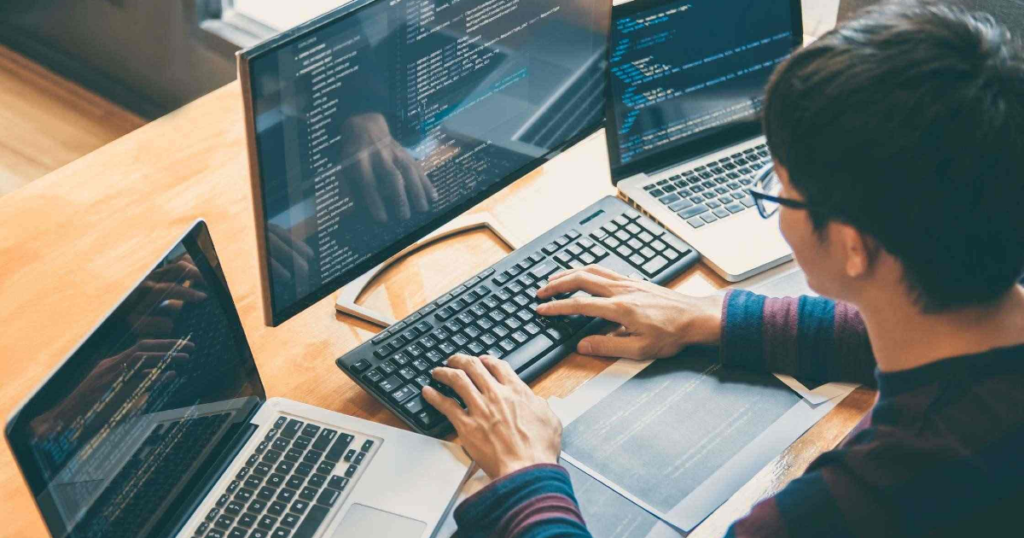
Developers are one of the most sought-after individuals in the tech and digital industries, no matter where in the world. Post-pandemic, investment in technology has never been higher, as many businesses were forced to undergo digital transformation in a short period of time. Furthermore, a significant number of organisations are looking to redistribute their budgets, and the big names in the market are still hiring at a fast pace. As the supply of competent talent hasn’t kept pace, this results in a highly competitive job market with a severe talent crunch.
On one hand, the existing talent pool may not have the proficiency that’s on par with the rapidly changing times. On the other hand, there aren’t enough graduates from existing programmes to meet this demand, which would translate to companies struggling to find adequately skilled technological and digital professionals.
To give you an example of just how high the demand is for software developers (including software engineers), the U.S. Bureau of Labour Statistics has predicted that the employment in these roles will increase by 22% between 2020 and 2030!
If this scenario applies to your company too, you’d be wanting to source and onboard the best candidates. But, now you have to choose: Would you want to train your existing employees (who may not be familiar with the latest technologies), or hire people from the outside? The latter can be critical for specialised skills like artificial intelligence and machine learning. Which is why, in addition to training your current employees, you’d also need to channel your efforts into recruiting tech and digital talent.
First off, according to Techopedia, the term ‘developer’ can be defined as: “The key individual that builds and creates software and applications. He/she writes, debugs, and executes the source code of a software application. This job role is also known as a software developer, computer programmer, application developer, software coder, or software engineer. Although the primary job role is writing code, a developer also may gather requirements for software, design or overall software architecture, software documentation and other related software development processes.”
Simply put, it’s referring to someone who’s responsible for creating or working on the development process of a product or service. Now, as they may work alone or on a team (depending on the complexity of the project), it’s more likely for them to pick up a variety of skills along the way. This is corroborated by the Stack Overflow Developer Survey 2021, which reported that few individuals consider themselves to be one single type, with many of them wearing multiple hats.
The majority of respondents said they considered themselves to be more than one type of developer – with database administrators, site reliability engineers, and security professionals having the most variety. On average, each of these roles reported being seven other developer types! With that said, companies and recruiters can see for themselves why great developers are on the radar of everyone out there, so it’s no surprise that the competition is fierce.
We now come to the main meat of this article: The all-important questions of “What can you do to differentiate yourself from the rest of the competitors?”, “How do you win in this tech talent war?”, and “Why should they choose you as their next employer?”
This guide was created for all the companies out there who are still on the lookout for their right fit, especially if their company isn’t a big, famous tech company with a hefty budget like Google, Apple, or Facebook. Remember: You can only do so much with salaries and perks; you’re going to need to go above and beyond with methods like promoting your company’s reputation in the developer community as an excellent place to work, as that’ll allow you to become more attractive to clients and investors too. Without further ado, let’s begin!

While it may seem like a no-brainer to hire someone who’s experienced and comes with an impressive resume showing off their capabilities, it doesn’t necessarily mean that they’re the best. You see, hiring a developer who’s only graduated a year or two ago may lack the specific technical skills, but he/she may have the ability to learn quickly, have fresh ideas, and apply new strategies to solve problems. While experience is still important when it comes to searching for the top talent, it’s equally as important to look for other factors such as the individual’s capacity for learning, as well as bringing non-conventional methods to the table in using available tools and techniques to face issues.
This presents you with the opportunity to provide valuable resources for the current employees and new hires. The aforementioned survey discovered that respondents aged 45 and above were more likely to have learned from books and other forms of physical media (84%), while those who were younger, i.e. under 18 years old, rely most on online resources such as videos, blogs, and forums (85%), which makes them most likely to have learned from remote courses or certification programmes. It was also found that more and more people are learning to code online, as the number increased to 70% (from 60%) year-on-year.
As such, it’s on you and the company to provide a wealth of tools and resources for your employees to pick-up and build their skills, which should encompass the traditional and digital mediums. There’s no one-size-fits-all approach for people to learn, so this will allow your employees the freedom and flexibility of choosing the resources and formats that work best for their learning style. Don’t forget to purchase access to online platforms if possible, because developers can then piece together the individual courses they want to create their own learning path. The top three most popular ones are Udemy (66%), Coursera (35%), and Codecademy (26%). Since developers want to have as many ways as possible to advance their technical skills and careers, you know that this method would be a very great perk indeed!

When it comes to the pandemic, one of the major changes in our daily lives had to be learning how to survive while in full lockdown. This affected not just our personal lives, but our work schedules too, as we were forced to deal with fully work-from-home (WFH) arrangements for the first time in history. While many suffered with adjusting and coping in the beginning, it soon turned out to be a blessing in disguise as many people found that there were more benefits in the long-run, compared to the initial phase of struggling.
As stated in GRIT’s Salary Report and Market Outlook for Singapore and Hong Kong, it was found that both employees and employers reported multiple benefits in a fully WFH or hybrid schedule. In Singapore, employees recorded 25% lower stress levels, 80% of home workers enjoyed a better work-life balance, while 73% of home workers noted that they consumed healthier food; employers found that there was a 13% performance increase, a reduction in absenteeism and medical claims, as well as stronger intra-team communication and interactions. In Hong Kong, employees stated that they had enhanced productivity due to the perceived better quality of life (more time to rest and exercise), decreased commuting time and costs, plus enhanced efficiency and lower burnout risk; employers found that it helped to develop a flexible hiring strategy, there was an overall increase in job satisfaction, and it allowed them to retain employees better.
It’s no wonder that the Stack Overflow survey found that 85% of developers say their organisations are at least partially remote, with 43% of respondents stating that they enjoy a fully WFH arrangement, and another 42% stating that theirs was hybrid (some remote, some in-person). The creation of various tools and strategies during the pandemic thus allows for much more flexibility in where developers can still carry out their work efficiently, which is where your company can stand out from your competitors by giving your employees the option to choose where they’d like to work. You not only offer an attractive perk, you’d also benefit from being able to hire the best from anywhere in the world!

There’s a saying which goes “two heads are better than one”; imagine if this were a team that consists of experienced and like-minded professionals, they’d be able to accomplish so much together. “Each individual has unique gifts, talents and skills. When we bring them to the table and share them for a common purpose, it can give companies a real competitive advantage. When people play off each other’s skills and knowledge, they can create solutions that are practical and useful,” said John J. Murphy, author, ‘Pulling Together: 10 Rules for High-Performance Teamwork’.
At your company, finding the right person to do the job is only half the battle won; you’d need to also find people who are able to work well with others so that it increases the potential for innovation, more effective problem-solving, and smarter risk taking. “We found that groups of size three, four, and five outperformed the best individuals. This performance is attributed to the ability of people to work together to generate and adopt correct responses, reject erroneous responses, and effectively process information,” said Dr. Patrick Laughlin, researcher, University of Illinois at Urbana-Champaign. And while it’s good to have an internal team for developers to fall back on, it’s also just as important for you to encourage them in seeking information and guidance from online communities.
As shown in the earlier methods, developers learn best when given the freedom and flexibility to chart their own learning course. The survey reports that apart from technical documentation (88%) and blogs (75%) taking up the first and third spots as some of the most relied upon online resources, the second spot goes to Stack Overflow (86%). For the uninitiated, think of Stack Overflow as a forum where developers of all types and experience are able to collaborate and share their knowledge. This shows how important it is for companies to have well-written documentation available, as well as an active community (whether internally or externally) to answer questions and provide solutions. It was also found that 98% of the respondents have visited Stack Overflow, with 81% of them visiting the website weekly and 53% of them visiting daily, suggesting it’s a valuable resource for people who are either professional developers or still on a learning curve.

On the same topic about people in an organisation, there used to be a mindset that you can only find success when you surround yourself with people who are just like you. Nowadays though, with the shift in the way we work and the increasingly blurry lines between geographical locations thanks to technology, true success now involves people from all walks of life. According to a report from McKinsey & Company, a global management consulting firm, it found that teams consisting of people from diverse backgrounds (gender, age, ethnicity, etc.) are more creative, and clock in better performance by up to 35% compared to more homogeneous teams.
So, while the world of developers used to be a predominantly male environment, this needs to change, and it can start with your company! The Stack Overflow survey has found that those who are learning to code are slightly less likely to identify as a man and slightly more likely to prefer to not identify their gender, as well as less likely to identify as European and/or White. While the percentages are still small, it’s already an indication that the new group of developers who may enter the workforce soon could be more diverse. By actively taking measures to diversify your workforce, it allows you and your teams to be more open-minded in unlocking new opportunities, overcoming new challenges, and gaining new insights.
At the same time, you should also be aware of inclusivity, which is the act of ensuring that the minority groups feel included and welcomed in the workplace. It’s one thing to hire different types of people; it’s another to allow for everyone to be involved, to voice their opinions, and to be heard. When this happens, you’re essentially maintaining a healthy workplace that encourages creativity, thus allowing the employees to feel like they belong. In turn, employees who feel comfortable, valued, and respected in the workplace will be more motivated to carry on contributing to the company’s continued success.

Nothing is more frustrating and demotivating than to be halfway through an urgent project, then find out that key information you require is being withheld by the head of another department, due to a number of vague reasons such as lacking necessary approvals and no formal black-and-white trail. This does sound like there’s a lot of red tape, which will then cause unnecessary delays as well as a toxic environment at work, doesn’t it?
This obsolete practice is not only time-consuming and patience-hogging, it can also test the tolerance of even a saint. It’ll involve excessive complexity and delay, uncompromising routines, as well as other practices that can strangle the best of intentions, hinder innovative measures, and stifle the entire flow of creativity. The worst possible outcome of this: Having that urgent project pass its deadline, anger the client(s)/investors, and miss that critical window of opportunity to launch the product/service ahead of your competitors!
If you’re still unconvinced about the level of severity when it comes to red tape holding your employees back, check out these sobering data from the survey:
This is why it’s so crucial for your company to take the necessary steps in doing away with as much red tape as possible, in addition to ensuring that your employees have easy access to available learning resources and getting the support they need for answers or solutions to problems. You should also make programmes like Continuous Integration & Continuous Delivery (CI/CD), DevOps, and Automated Testing readily available at your company. All these steps would all be highly appreciated by the developers, as it was further noted that a majority of them encounter a knowledge silo at least once a week (68%), and spend more than 30 minutes a day searching for answers or solutions (62%).

Just as you wouldn’t expect a doctor to have to buy his own stethoscope and surgical set, similarly, any developers you hire shouldn’t be expected to already have the required programming/scripting languages on hand. If you’re at a loss as to which ones you should be getting, we’ve got you covered. The Stack Overflow survey has revealed that overall, JavaScript (65%) has held the top spot as the most commonly used programming language for ten years in a row! The other two that are just as popular are HTML/CSS (55%) and SQL (49%).
Don’t forget to sign up for databases too, which is basically a system that contains many features that safely store and scale the most complicated data workloads. Their open-source nature and high stability make them integral to many of the most popular software stacks for building and maintaining products and services. Almost half of the respondents use MySQL (47%), whereas the other two most common databases are PostgreSQL (44%) and SQLite (32%).
Finally, there are cloud platforms and web frameworks to consider. The former is a type of server in an Internet-based data centre that allows organisations to store, back up, and recover data; the latter is a type of platform which allows organisations to easily build fast and scalable network applications. You’d need to ensure that you have the crowd-favourite types available for your employees (both current and future), so which one should you choose if you’re tight on budget? For cloud platforms, the top three are AWS (51%), Microsoft Azure (29%), and Google Cloud (27%). For web frameworks, you can choose between Node.js (47%), React.js (43%), and jQuery (29%).
By making sure that you’re well-prepared with these, it’ll not only show the top developers that you’re up-to-date with the universally-accepted technologies and did your best to provide them with it, you’ll also be demonstrating your willingness to help them ease right into their work rhythm – no need for them to have to scramble in understanding and learning how to use something that’s more obscure! Now, who wouldn’t appreciate and be grateful for a company that takes their staff well-being into consideration?
If your company is looking to develop the next ground-breaking app, or a core product you’re going to build your entire business around, you’ll want only the top talent on your team. With our tips in mind, you’ll have a better idea of how the best developers think, and what it is that will attract them to your company. And if you’re lucky enough to find a few who are interested in what you have to offer them, before hiring, take the time to analyse and rank your priorities. From there, you’d be able to customise your candidate search based on your most important needs, so that you’ll choose the one who is the right fit. Don’t forget to look at all factors like the candidate’s hard skills, education and certifications, experience, as well as soft skills. Good luck!

When recruiting new blood from the modern generation, remuneration and physical workplace benefits are no longer enough to intrigue talent to join a company. While these are predominant career aspects for their livelihood, employees look towards a positive company culture to provide added value for their life and work.
In the current job market, modern-day employees seek companies with stand-out, positive company cultures, like:
A company’s beliefs, ethics, traditions, and values are what translate to their company culture. Its importance and relevance are steadfast across the workplace, from effective hiring processes to recruiting the right talent to how employees should feel about work and realise their end goals.
In the big picture, there are 8 company culture types found in a typical workplace:
Read more: What Is Company Culture, And Why Is It Important For Businesses And Organisations?
Post-pandemic, employees aren’t just looking for the right salary but also the right company culture they can fit into. This increased demand has forced companies to pivot into developing positive workplace cultures to attract and retain talent.
Curious about how companies around the world keep their employees happy and productive? Take a look at these 13 company culture examples!
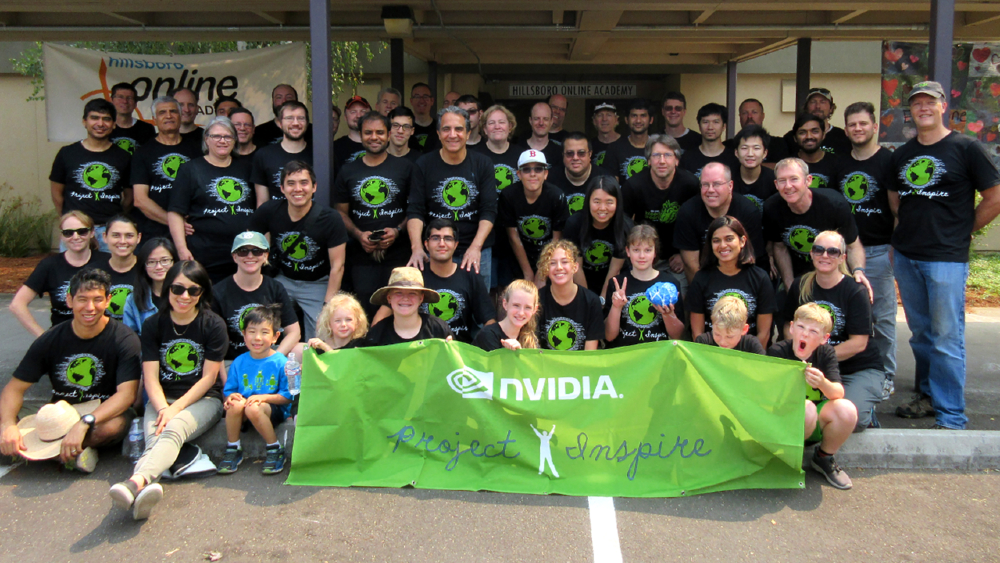
Nvidia ensures that they walk the talk on their core values, and are often praised for their authenticity with the value of ‘one team’ – removing hierarchy and politics within the company so employees can focus on solving work challenges better.
One of their commitments to their people include fostering a culture where everyone is able to focus on their work, by anticipating what each employee may need at each stage of life. Imagine this: They provide benefits that allow their employees to deal with student debt, care for aging parents, or build a family.

The internationally-renowned beauty company aims to build an inclusive work environment for everyone because everyone is beautiful! They uphold the values and legacy of their founder, such as nurturing world-class talent, encouraging a diverse workplace, and putting the community first.
As the world progresses, so does the company with its Inclusive Leadership Behaviours tool, staying true to hiring without biases and in the workplace. Unconscious bias training is also regularly conducted, making The Estée Lauder Companies an inclusive workplace that condones discrimination and provides equal opportunities for people of all races and genders.

If there’s just one word to describe Netflix’s company culture? Freedom. One way the digital streaming company drives empowerment and autonomy in its employees is by giving them the power to make decisions for the company.
By doing so, employees have a greater sense of responsibility, self-discipline, and accountability that motivates them to work better. There are also ‘unusual’ instances of freedom within Netflix, like the internal and systematic sharing of documents, vacation and parental leave policy, and even an ‘other expenses’ policy ruled by the philosophy, “Act in Netflix’s best interest”.

‘Ugly babies’ are what Pixar President Ed Catmull calls an idea still in its infancy. At Pixar, psychological safety is adopted to protect an idea’s originality before turning it into works of art. It forms a space for employees to provide feedback and improve, as they are the ones who will judge the work and not their peers.
Moreover, the company’s North Star is an inclusive work environment to produce representational content for their audience, provide opportunities for talent, and value the contribution of different backgrounds. This is most evident in recent Pixar projects like Coco, Bao, and Soul, which highlight various ethnicities and cultures in America.
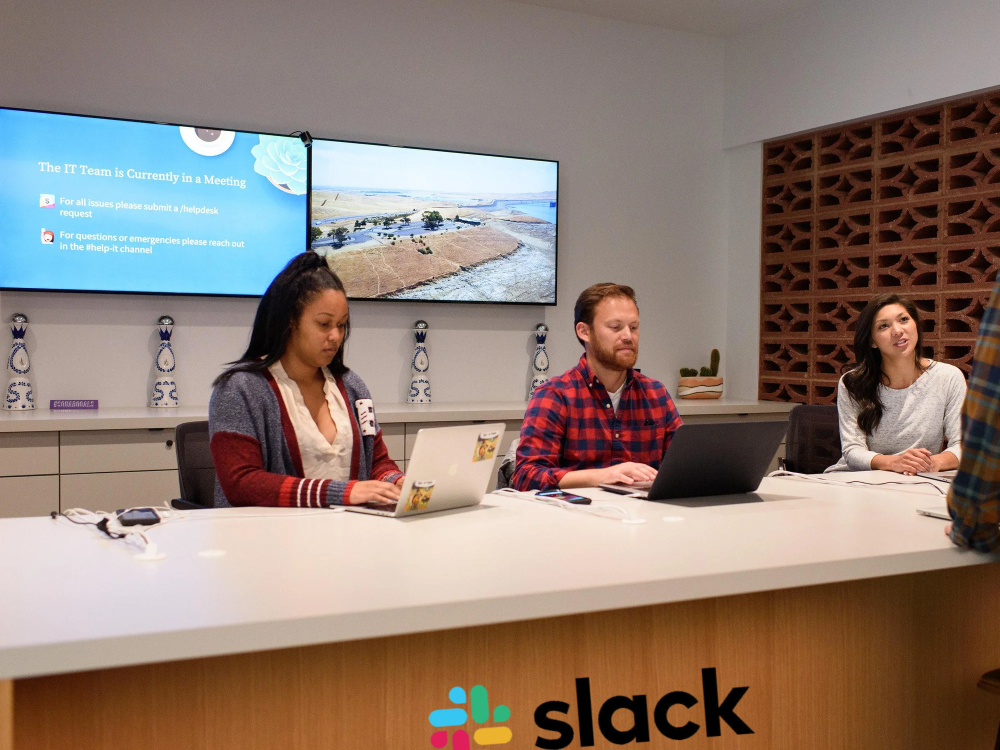
“Work Hard and Go Home” is their motto. An SaaS company that deals with technology 24/7, Slack understands that employees, too, have a life outside work. Hence, a people-first culture where employees are not expected to work after hours encourages them to speak with purpose and live their life to their fullest.
Besides that, the Slack for Good initiative provides opportunities for underrepresented individuals in technology. To date, they have built a program to help the formerly incarcerated find employment in tech; introduced community involvement, active volunteerism such as paid Volunteer Time Off (VTO), and employee philantrophy.

8 core values guide employees in everything they do, providing opportunities for them to grow as a person and member of the organisation. Their values in action form the very existence of their company culture, appreciating employees who share knowledge, care for people and the environment, lead by example, and practice togetherness.
Employees also have the space to make mistakes, as IKEA believes that doing so is better than proving that they are not wrong. This coincides with their family-focused environment, where people can be themselves and no one tries to stand out. In the words of this Swedish brand, “Only when you are sleeping, you are not making mistakes.”

“Create an environment that you want to work in” is what Shopify says, and so they did. From nap tents to townhalls where executives are front and centre in the hot seat, the tech giant fosters the relationship between the company and employees by implementing open communication and a sense of security.
Shopify also practises something called a ‘trust battery’. On an employee’s first day, their battery level starts at 50%, which can charge or discharge overtime while working with others. This concept allows for more transparent conversations regarding trust in workplace relationships, akin to performance reviews without taking criticism personally.

The driving force of Salesforce is the Hawaiian spirit of Ohana, or family, since its inception in 1999. Together with this is their unique 1-1-1 philanthropy model, Pledge 1%, that gives back to local communities.
How this integrated approach works is companies who take part pledge either 1% of equity, 1% of their time, 1% of their product, or 1% of their profit. At the time of writing, Salesforce has contributed over USD$240 million in grants, 3.5 million hours of community service, and product donations to over 39,000 non-profit organisations.

It’s not about how the job gets done but more about what gets done – that’s the work culture at LEGO. Instead of being told what to do, their approach of providing employees with clarity and strategic choices allows staff members the freedom to execute their tasks the way they want them.
Fostering creativity at work also empowers employees to come up with innovative ideas to solve problems, which goes hand-in-hand with their playful, youthful brand outlook. There are no culture decks or handbooks too; just a free-thinking, non-controlling, and non-restrictive environment.
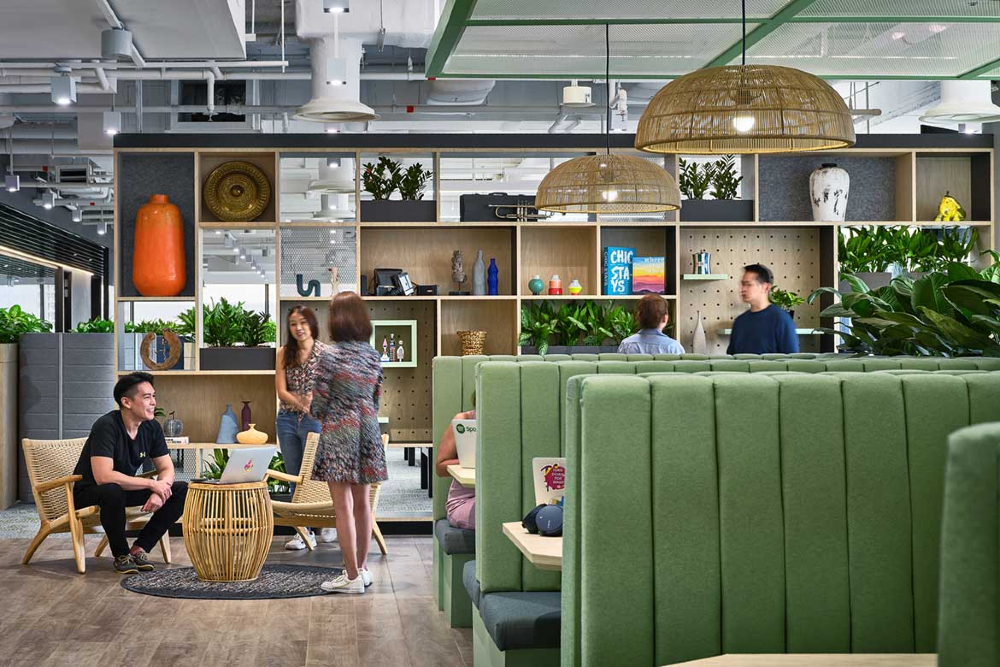
In 2021, the music-streaming company formally introduced the work from anywhere model and a flat management structure to foster teamwork and open communication, making the company a hot favourite career choice.
Its adaptive company culture doesn’t stop there. To encourage employee autonomy and accountability, Spotify adopts self-organising teams of ‘squads’, ‘tribes’, ‘chapters’, and ‘guilds’ to execute tasks or projects instead of bureaucratic top-down management styles.

An SaaS company that thrived during the COVID-19 pandemic, Zoom wants to do more than just the same ol’ employee engagement and company culture practices. Their solution? A happiness crew to organise events, celebrations, community events, and volunteer activities.
Responsible for forming a positive work culture within the organisation, the happiness crew’s ultimate mission is that employees work in a happy environment. From this, the company has the chance to establish and implement new work cultures – to grow, adapt, and provide greater environments for employees to work in.

More than just coffee and the seasonal pumpkin spiced latte, Starbucks is driven by performance, humanity, inclusion, and relationships. The company strives to provide opportunities for refugees, veterans, military spouses, and the disabled – Signing Stores run by the deaf and hard of hearing community, as an example.
The relationship-driven approach is evident in their operations. For customers, it’s why they want to know your name, while for employees, even part-time staff in the United States qualify for health insurance and stock options. At Starbucks, you’re more than just an employee. You’re a partner.

When it comes to positive company culture examples, we can’t ever leave out Google. Known for having one of the best company cultures in the world, its love for its employees is evident, from on-site laundry centres to providing childcare at its headquarters.
They take good care of employee well-being to ensure that there’s nothing to worry about at home, so they can focus on working for the company. As their employees are their most important assets, a hybrid working model and four work-from-anywhere weeks per year truly capture the essence of an employee-first culture.
In this new age of employment, companies can no longer ignore the importance of company culture. As more talent cast their nets for the best workplace cultures to work in, business owners too must explore and develop their existing environments, as no one is more integral to a company’s success than their people.
A strong company culture not only reduces hiring costs, but also provides enhanced employee productivity, engagement, and consumer image. Plus, headhunting and aggressive hiring can take a step back, as the right talent will show up at your doorstep without being asked!

Just about anyone can put on a power suit, sit in a corner office, and give orders or delegate tasks to their subordinates. To be an effective leader though, there’s so much more that’s required, especially when you’re tasked to lead and inspire many people to take action. One of the reliable ways to determine if someone is ‘good’ at leadership or otherwise is to look at their people: Are they thriving, becoming better leaders themselves, inspired and motivated, so on and so forth?
You see, while it can be difficult to accurately pinpoint the similar traits and characteristics that define the greatness of a leader, it’s safe to say that a true one is only as good as his/her willingness to develop daily. Every success and failure is an invaluable lesson that can be turned into an opportunity to lead by example. He/she who’s able to follow through on their word and drive their people forward with purpose shows a strength of character, and a confidence in “getting their hands dirty”.
That’s why we’ve decided to create this handy guidebook to help all aspiring leaders reach their full potential, which is an essential life-long skill to attract and retain the top talent! Download your copy for FREE here, and get started on your journey towards hiring the right people with similar attributes – the willingness to evolve daily, determined, focused, honest, and have the courage to speak of their opinions:
“Leaders aren’t born, they are made. And they are made just like anything else, through hard work. And that’s the price we’ll have to pay to achieve that goal, or any goal which is worthwhile.”
Vince Lombardi

Being a hiring manager is no walk in the park. You’d basically need to pick the candidates who would fit the job role criteria and company culture. It can be a hassle initially; you comb through hundreds, if not thousands, of applicants, make a shortlist of the top few you think might fit, and then commence the process of setting up the interview sessions.
Even if all goes well and the candidate you choose agrees to come on board, six months later, you’re processing his/her resignation. Not a nice situation to be in, right? Especially after you thought this person would stick around for the long haul. New hire turnover is real, and unless you find ways to counter this, you might have to rinse-and repeat this situation until you find the right person who’s able to stay on. Don’t believe us?
TeamStage released a number of statistics regarding employer turnover in America, and found that 31% of new hires end up quitting or leaving within the first six months of working. Out of that number, 68% of them resigned within the first three months of working. This sentiment was echoed by Forbes, which reports that 20% of new staff tend to leave only after 45 days into their new work. Finally, over in Singapore, a poll involving over 600 working professionals conducted by NTUC LearningHub in 2021 found that one in four people are likely to quit their job and seek prospects elsewhere.
As hiring managers, the stats mentioned above can induce some fear when trying to bring on or keep a new hire in the company. But fret not! Below is a hiring process checklist created for all recruiters to refer and use. Should you follow this checklist, you might just have a better peace of mind when it comes to hiring or keeping the right candidate who’ll want to dedicate his/her time to the company for a longer period.

At this stage, you’ve already identified the resource shortage in the company, and what job scope would solve the problem efficiently. That, or the higher ups have already given you the direction to secure a new employee. You’ll need to create a job description, which will then be converted into a job ad that’s shared to the world of talent.
Make sure that your job description contains the correct title, summaries, and expectations. Also (we cannot stress this enough), do specify the exact duties and responsibilities required by your company for this vacancy.
One of the reasons why it was mentioned earlier that 20% of new hires leave within 45 days of working, is that they were confused had misinterpreted the actual work that was required of them.
You can post your advertisements on social media and job platforms, or you could opt to enlist the services of a recruitment company like GRIT, who’ll not only help you source and onboard the right talent in the shortest timeframe possible, but will also present you with a curated list of pre-screened candidates for review.
Once you’ve received applications, you can start the process of separating the wheat from the chaff. First, establish that they meet the minimum requirements for the company, then work to filter for all the candidates that seemingly have more qualities that they could bring to the table (such as additional certifications or a well-balanced portfolio).
Set a proposed interview date with the candidates and if agreeable, it’s time to run the actual session! By then, you should have your materials ready for the interview, as well as any questions and concerns you want to clear with them (gives you the opportunity to observe them in real-time too!).
Make sure you clearly inform the candidates about the duties and responsibilities to be carried out, as well as any other ad-hoc duties and expectations of the company’s other departments. Finally, don’t forget to ask them if they have any questions about the vacancy, and address their concerns to the best of your abilities.
Now that the interview sessions are finally over, you can breathe easy.
Or so you thought! The hard part actually begins now.
Before finalising your selection, make sure you’ve conducted thorough background and financial checks on them. You don’t want any hidden secrets or caveats coming out, and ruining the company’s and your reputation. Once you’ve selected the candidate(s) for the company, contact them to give them the good news! Usually, a phone call and a follow-up email should suffice. You can now move into the onboarding process of your new hire.

Now, in the weeks leading up to your employee’s first day on the job, you want to make sure all the relevant paperwork is completed, and the rest of the company is ready to receive the new person.
Usually, employees need to fill out tax forms, employee identification forms, and provide a copy of their personal identification for the company to process. On your end, you’ll need to draft an offer letter of employment and employee work contract. All you need to do is to send and request for the filled-in forms via email (it’s easier and faster), instead of asking the new hire to come to the office with his/her documents.
On the first day of work, you should get your new employee familiarised with the company’s policies and practices, the working hours and culture, any on-site SOPs, as well as specific work ethics practised in the office. It’s going to take some time for them to adjust, but it’s best if they know from the start.
Read more: What Is A Work Culture, And 8 Tips On How To Create a Positive One!
Depending on the job you’re hiring for, you’ll likely need certain equipment or supplies. Have them all prepared and ready, so your new hire doesn’t have to go running around like a headless chicken trying to get a hold of things from various departments.
Some companies require their employees to have a payroll account. This consolidates their pay, benefits, claims, and leave. Have that set up alongside the equipment and supplies. You don’t want any hindrances in the work progress.
On their first day, take your staff on a guided tour of the company. Show them the relevant departments, as well as respective people in charge and location, where they can catch their breath for 5 minutes. Don’t forget the more minor details like parking and access to the building. This allows them to hit the ground running, and not get overwhelmed with the new environment. Along the way, introduce them to their fellow co-workers who are already in the office, and if possible, secure a one-to-one meeting with the CEO. This will add a personal touch, and make the employee feel that he/she is wanted by the company.
And before we forget: Toilets. Make sure they know where it is. Absolutely essential for EVERYONE to know, especially on their first day!
The first week is going to feel like hand-holding, but it’s necessary. You’ll need to check on them a little bit more than usual compared to the regular staff. When delegating assignments, don’t put all of them on your new staff.
Give them one or two at a time, and monitor their progress from there. They’re definitely not going to get it right on their first few attempts, and you may need to step in and help out every now and then, but it’s worth it.
It gives your employees the sense that you care about their professional well-being, quality of work, their ability to fit in and feel like they belong, and that you’re willing to help as well.

After three months, or however long your company’s probationary period lasts, it’s always prudent to have a sit down with your new staff for a progress update. Getting to know where their progress and perception is at after three or more months will tell you if he/she is likely to stay for the long haul.
At the same time, you can go over any improvements or take note of anything special your staff has done during their probationary term. This gives employees a sense of belonging and validation for their hard work, and will spur them to continue to give their best to the company. It’s a win-win situation for all.
Now, if you follow this comprehensive new hire checklist, the chances of you losing your new employee drop significantly. It’s never easy to hire new talent, much less keep them. A great onboarding experience can nurture engaged, productive employees who’ll stay in your company.
There’s this humourous phrase which goes: “Husbands, keep your wives close; wives, keep your husbands close”. And companies? KEEP YOUR EMPLOYEES CLOSE (especially the skilled and good ones).
If you’re looking for a comprehensive onboarding solution that will take care of everything from policy and procedure manuals to supplying the necessary tools and supplies, contact us! We’ll work with you to develop a custom onboarding programme that’s tailored to your specific needs, and will help get your new employee up to speed quickly and smoothly.

After a couple of years spent indoors due to Covid-19, countries around the world eventually lifted restrictions and resumed what became known as the “new normal”. There’s been a lot of change in the workforce since then as employees moved to established companies for better job security, lobbied for flexible/hybrid working arrangements, or straight out called it quits with toxic workplaces!
The transformation was imminent and bound to happen. Remote working has been practised since the 2010s, but was only popularised recently as a very viable option because of the pandemic. With this new workplace and career demand, employers and businesses have to adapt and adopt them quickly to survive.
That means modern recruiters are facing the brunt of managing stakeholder expectations as well as the candidates’ demands. For example, if the pandemic has taught us anything, it’s how to spot a company’s red flags instantly, making it challenging for its recruiters to hire new staff. Existing ones may even leave for greener pastures.
Moreover, it’s not just the recruiters and hiring managers who are interviewing candidates, but it’s now the other way round too. Just as much as interviewers want to know if a person fits the vacancy, the candidates will also want to know if the role and company are right for them.
Accomplished talent are out there, and willing to take up new opportunities. The catch? Better remuneration, good work-life balance, decision-making authority, etc. Beanbags, pool tables, and an infinite snack supply are no longer highly-coveted workplace perks. Intangible benefits are the new focus, so are companies willing to invest in these, and their people?
Top talent are the top for a reason. Be it their speed of learning, ability to close sales instantly, insane understanding of complex jargon, or years of experience, they are the crème de la crème who can boost the performance of any business.

A McKinsey study in 2012 found that the relationship between the quality of talent and a business’ performance was almost perpendicular: By replacing average talent with greater talent, work productivity could increase, thus shortening timelines for projects and reaching capable business goals.
Instead of just filling a space in your workplace, the candidate you hire should be a person who can support your business and propel it further. Managers and the brains behind the team should be top talent, but it doesn’t dismiss the fact that other team players who should have just as superior skills to create a cohesive, well-oiled workflow.
The best talent are an asset, and to retain them, companies need to be willing to offer more than just a generous salary. Here are some of the things modern employees look for in a job, besides wages:
How do you find good employees for your company? It all begins with a game plan!
As the head honcho of hiring in a company, recruiters face the heavy responsibility of evaluating the best candidates to employ. But to find and retain good employees requires a well-planned recruitment strategy – almost like a football manager scouting for talent, reeling them in, and then sealing the deal with a contract.
Besides attracting top talent, a good recruitment strategy can help reduce the cost per hire by prioritising quality over quantity, increasing diversity in the workplace, and filling big shoes by targeting specifically-qualified candidates.
Some of the best ways to find employees are to post on job platforms, attend career events, enlist the help of an external recruitment or headhunting agency, and even implementing an employee referral programme. Ultimately, the goal is to attract the best employees to want to work with you.

Everyone’s on social media nowadays! You, your colleagues, your parents, your bosses – heck, even your grandparents and your pets might have accounts. Leveraging social media platforms to grow your brand creates better visibility and credibility, especially when jobseekers look up your business online.
Not only does staying updated on social media validate your online presence and business, but it can be a great recruitment tool for talent. According to Glassdoor, 79% of job seekers turned to social media to search for jobs, and a 2013 survey by SHRM (Society for Human Resource Management) found that at least 84% of organisations recruited employees through here.

Employees want more than just money. Yes, money makes the world go round, but the true value lies in a work-life balance, autonomy, career growth, personal development skills, prospective promotions, an open-minded management style, etc. A positive workplace is a productive one, with many prioritising their well-being over material perks.
By creating a positive workplace culture, everyday work can be impacted positively, and encourages employees to stay engaged. One example is flexible working conditions where employees can work remotely or in the office. Only 58% of office workers believed their culture was positive, in comparison to roughly 70% of remote or hybrid workers.

Growth is not just a part of a business, but everyone, including employees and managers. Developing these programmes in your company provides learning opportunities and transformative career growth – all while attracting new talent and retaining current ones.
Besides professional development, companies can provide training classes for employees to fill the gaps in their skills or to learn something new. The best programmes should offer formal and informal opportunities that match their needs. In reality, 76% of millennials felt that these opportunities were a major contribution to job satisfaction.

From that first interview invite to signing the job offer, the hiring process reflects the company’s operations strongly. A positive interview experience assures talent that your company is well-structured, engaged, and meets their expectations – an opinion heavily supported by 87% of candidates.
Through interviews and meeting candidates in person, hiring managers or recruiters can take this opportunity to develop stronger interpersonal relationships. Sometimes, this could be the deciding factor on whether a talent decides to accept a role or not, tying back to the importance of the overall experience.

Passive candidates refer to candidates who are not actively looking for a new job. In fact, they could be very comfortable right where they are. Research says that at least 70% of the world’s talent are passive, biding their time until greater opportunities pop up.
To target them specifically and bring them onboard, you’ll need plenty of research and find out what their goals are. This helps create a tailored approach as one of the best ways to find employees, and gives recruiters a wider net of experienced candidates to select from.

Birds of a feather flock together, and it can go the same way for talent! If you already have talented employees on your team, an employee referral programme is the most effective tactic to bring onboard top quality fresh blood.
When an employee refers someone for a job, they wouldn’t refer an unskilled candidate. They would recommend someone who’s just as good as them, if not better. An ERIN report in 2020 discovered that employee referrals lead to a higher hiring rate (at least 4x), and 45% of referred employees remained in the company for over four years.

A few ways to do this are partnering with schools to seek young talent or hosting/joining a career fair. It puts your business directly on the ground to meet candidates in real life, and to be easily identify if they’re a good fit for the company.
Plus, having existing employees present themselves as brand ambassadors can help prospects feel more comfortable speaking to someone already working there. Almost like talking to a friend, as at times, recruiters and managers can come across as imposing.

Like children asking “Why this?” and “Why that?” to everything, employees want a ‘what/why’ in their job too. Why are they doing this, what is the company’s purpose, and how can they make it happen?
Employees feel more empowered when they work towards meaningful goals. PWC’s 2016 study showed that millennials were 5.3x more likely to stay on in a company when they resonated strongly with their company’s purpose. Hence, employers must ensure their companies are purpose-driven and embody strong values to appeal to and maintain talent.

To attract the best talent to join your company, utilise creative aspects in your job ad postings to get attention, like videos and graphics. Nobody wants to read long text paragraphs about the company and vacant roles. Make it short, snappy, interactive, and honest.
“But I have so many things to put into my job post!” And in the age of social media, attention is fleeting as we jump from post to post, and platform to platform in mere seconds. Shorter job ads (1-300 words) had higher application rates compared to medium (301-600 words) and long job ads (over 601 words), making concise information key to attracting eyeballs.

The world is moving faster than before, and for businesses to stay in the race, they need to be flexible and integrate the latest career and industry trends. Be it remote working, introducing new technology to ease efficiency, or jumping on the live-streaming wagon, these practices help companies stay up-to-date as well as appeal to candidates as a proactive and progressive place to work at.
Companies often emphasise that their success stems from their people, and that couldn’t be more true! If there were no humans to man the machines, calibrate systems, look things over with a sharp eye, or provide an empathetic touch to everyday life, businesses would feel robotic and devoid of life.
More than just manpower, they are the company’s biggest stakeholders. They act as unofficial brand ambassadors and can affect your public brand image. If employees are happy and view their companies positively, they would be more than willing to share their experiences with others as they feel valued. For a business to come to fruition, it starts with nothing else but people.